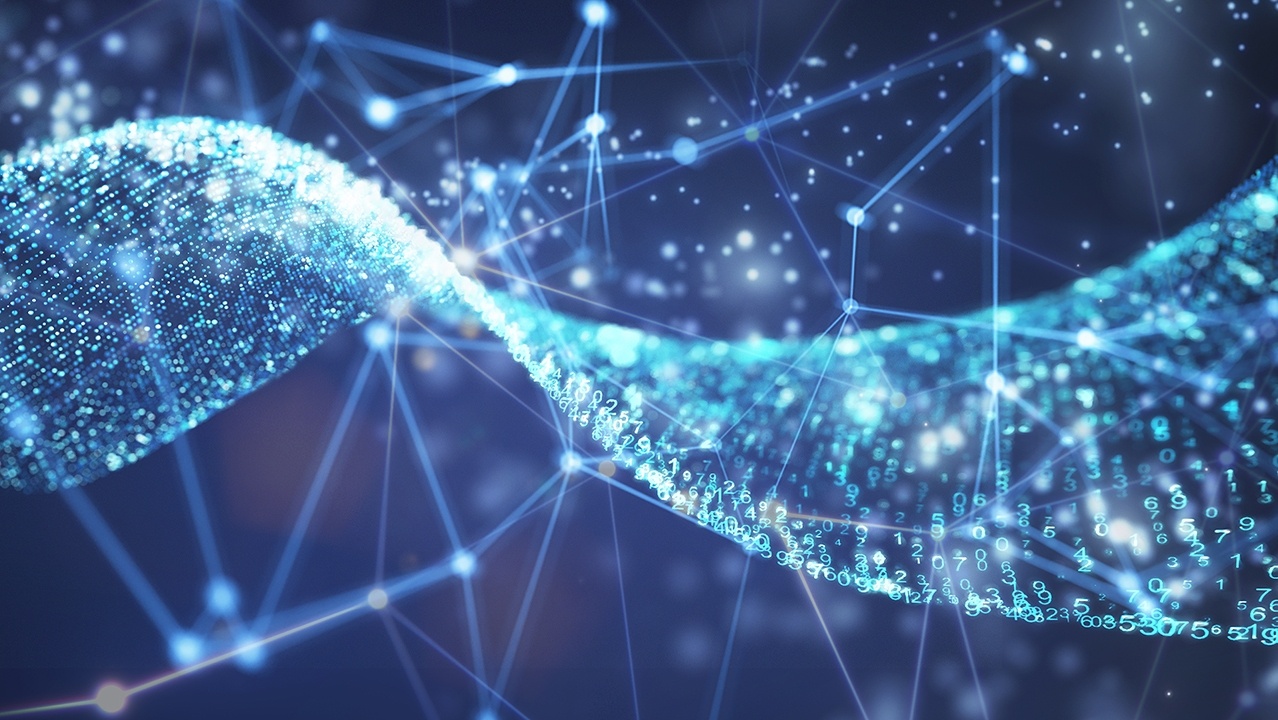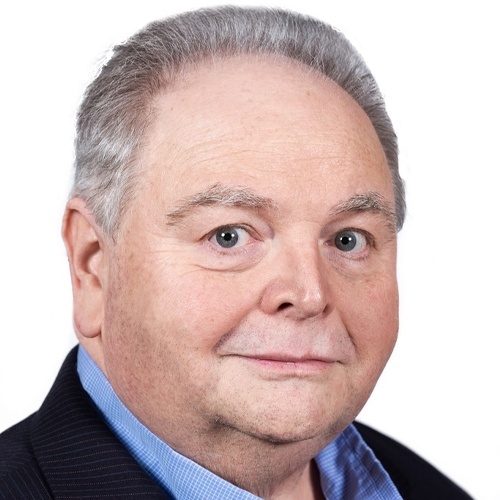Gain new perspectives for faster progress directly to your inbox.

A conversation with David Saari, Ph.D.

In the rapidly evolving field of intellectual property (IP), there is unprecedented demand for professionals with advanced scientific knowledge, legal expertise, and technological savvy. David Saari, Ph.D., senior scientist on the CAS IP ServicesSM team, possesses all three skill sets and exemplifies what it means to be a "triple point" expert in the scientific IP realm. Reflecting on decades of patent searching experience, David offers valuable insights into the importance of a multidisciplinary approach in today's competitive IP landscape.
Interviewer: You previously gave a talk at a PIUG (Patent Information Users Group) conference about the need for patent searchers to be “triple point” professionals. Can you explain what that means and how it applies to the CAS IP Services team?
David: “Triple point” is a chemistry pun; it references phase diagrams where, at a specific temperature and pressure, the solid, liquid, and gas forms of a substance can co-exist. I use it to highlight my belief that three distinct, independent sets of skills are needed for the highest-quality, world-class performance in the intellectual property search service business.
I have a Ph.D. in synthetic organic chemistry and am a USPTO Registered Patent Agent, but those specific credentials aren’t essential. However, over the course of my 19 years at CAS, I have concluded that solid skills in science, patent law, and information technology are fundamental for patent searchers.
Interviewer: Can you share some examples of how that level of multidisciplinary expertise provides value during the patent search process?
David: When working with inventors and innovation teams, a better-than-casual understanding of the science is needed to communicate effectively and to determine whether the search results match the client’s needs.
For example, antibody-drug conjugates remain a hot topic in human medicine. The patent searcher needs to understand antibodies (what is an antibody, how does it work, what makes it unique?), the payload (which can be an anti-cancer drug or a substance used for analysis or visualization), and the linker used to conjugate the drug to the antibody (is there anything unique about the chemistry of the conjugation process?).
Similarly, clients expect their search partner to understand the nuances of patent law. Some of those nuances can be exquisitely subtle — for example, in U.S. patent practice, the word “relevant” has a specific meaning and implies a duty to disclose information to the patent office. A better way to highlight an important result would be to write “Answer X is a strong match to the objectives of this search project.”
There are also situations where the distinction between “novelty” and “obviousness” is very significant, along with other subtle but critical requirements of patent law that non-IP professionals could easily miss.
For example, country-specific variations in patent law can have a major impact on how a search strategy is developed and how the search results will be used. You also have to consider how the information will be used, perhaps to support patentability, validity, or freedom-to-operate decisions. Then there are different document types (patent vs. non-patent literature), publication dates (especially in the era of “pre-publication electronic access” or delayed mailing schedules), and the idiosyncrasies of different patent publishing authorities.
Interviewer: How does information technology expertise fit into the equation?
David: I tend to split information technology into two categories: information retrieval and information delivery. Patent searchers can rise to the top 10% of their profession by becoming an expert at both of these skills.
To master information retrieval, a searcher must be highly proficient at using multiple, distinct databases and search platforms. For example, the chemical structure drawing tools used by different search platforms are similar but not identical, so you need to be able to handle those distinctions.
Comprehensive knowledge of search technologies is even more important when I need to modify a search strategy because the initial search identified too many, too few, or poor-quality results — or failed to identify an answer the client expected to see.
The ability to quickly adapt your search strategy in that type of scenario is the kind of world-class skill to which all searchers should aspire.
Interviewer: That sounds like a challenging balance to achieve.
David: Yes — in intellectual property, there is a duty to review everything. If I submit a report to a law firm with 50 answers, the firm has a duty to look at all of them. If the firm decides to not share one of the 50 citations with the patent office and it turns out that the omission could have potentially had an impact on patent examination, the inventors could lose patent protection worth millions of dollars because they failed to disclose “relevant” information.
But even a large law firm cannot comb through 5,000 search results in a reasonable amount of time, so it’s my responsibility as the patent searcher to identify the 20 - 50 most impactful results that will address my client’s needs without missing anything important.
Then, for effective delivery of those results, you need to be flexible and communicative during the entire search process, along with being very skilled at crafting written reports.
Interviewer: What goes into the creation of a search result report from CAS IP Services?
David: Above all, we are delivering an intellectual property tool for our clients to use. The objective is to provide a report that exceeds expectations and anticipates questions about how/why/where results were obtained, even months and years after the project was completed.
Our reports demonstrate an understanding of the client’s initial request and document any changes made throughout the course of the project. We want clients to understand what we did, how we did it, and why changes were made to the initial request. Understanding project details needs to be quick and easy.
We also want our work to be 100% transparent. We encourage collaboration and communication between searchers and clients. Clients always have my direct line and sometimes contact me late at night or on weekends. It’s through a high degree of collaboration and thorough documentation that we deliver the best results possible.
Interviewer: Why do you think it’s important to continually develop all three of the skill sets you mentioned (science, patent law, and information technology), rather than just reach an acceptable or minimum level of patent search knowledge?
David: For my clients, avoiding infringement cases is always a major priority because it can be so financially destructive. For example, if you manufacture a product that denies the patent holder $100 million in sales of their patented product, you have caused $100 million in damages. The statutory penalty for willful infringement is $300 million, or three times the actual damages.
When the risk is that great, you need to invest in a search partner who is at the top of their profession to protect your business goals.
There are organizations in the world that will provide a very basic level of patent search service. After about two engagements with those people, the law firms or corporate counsel will say, “I want to talk to somebody who knows what they're doing.”
An inventor or executive doesn’t want to explain everything three different ways and then come back and hope that the patent searcher understood. As a patent searcher, you need to have that scientific background, patent law expertise, and technological savvy to build trust and deliver what the client needs without wasting anyone’s time or putting their IP at risk.
Interviewer: How has the role of a patent searcher changed over the course of your career?
David: Back in the day, chemical substances were indexed by codes representing fragments of the chemical structure. Indexing data was distributed on IBM punch cards, so the searching was done by running them through a sorting machine.
The next best thing was command line instructions to draw chemical structures piece by piece. Nowadays, we have online chemical drawing tools, and the challenge is being able to sort through possibly thousands of results to give the client something they can reasonably review and hopefully use for a favorable outcome.
Interviewer: What are you looking forward to in the future? Do you have any fears for the future of IP research?
David: Oh, no, no. The future is bright and rosy (laughs). One of the things that people are talking about right now is artificial intelligence. Can big machine learning models do the work of a patent searcher? Although there are some interesting aspects to AI in the intellectual property search and evaluation area, it doesn't yet have the promise of something that is on target and focused.
This is even more complicated for scientific IP because it requires highly technical information. How do you render a chemical structure to be utilized in an AI environment?
As a trained scientist, I can see a chemical structure and recognize it immediately as a benzene ring and understand its specific properties or behaviors, but an AI tool might not be 100% successful, partly due to the way that the structure is drawn.
Interviewer: Does that mean you are an AI skeptic?
David: No, not really — patent searchers, especially here at CAS, have always been early adopters of technological advances, and I see a lot of exciting possibilities for the future when thinking about the combination of human intelligence and AI tools.
There are not a lot of people who still have the skill and the experience to keep up with these tools, even though they have evolved from punch cards and microfilm and all the other fun information tools that we had just 10, 20, 30 years ago. But who wants to go back to running searches with fragmentation codes on IBM punch cards? No thank you, I’d rather live in the present and future.
Interviewer: Reflecting on your years at CAS, do any former patent search projects stand out to you as particularly interesting or enjoyable?
David: I can think of a fun example – for one project, the head of IP at a major pharmaceutical company was investigating a potential licensing agreement. The company received two separate patent search reports: one from their potential licensing partner and another from their internal patent search team.
However, this potential deal was extremely high-stakes so the IP executive decided to seek a third search by an unaffiliated party. The company selected me to do the additional patent search but did not disclose that I was the third set of eyes to look at this particular project.
I did the search, and a few weeks later, I got a call from a contact at the pharmaceutical company. This individual said that I had found two answers that neither of the two previous searchers identified. Not only were they new results, but they were spot on. The contact explained that these two results could potentially have an impact on the final licensing decision.
That type of feedback, when I hear that I delivered search reports that genuinely made a difference for my clients and went beyond what they could do internally, is extremely satisfying.
Interviewer: A final question — what practices or skills do you think are most valuable to clients looking for a patent search partner?
David: It always comes back to that combination of science, patent law, and technological expertise. I don't need to use my full range of skills and experience on every project, but there are projects that come along where I have to wear every hat and perform each task at an exceptional level. The same is true for my colleagues, and we are all committed to maintaining and expanding our level of multidisciplinary expertise.
CAS senior scientist David Saari is a registered patent agent and holds a doctorate in synthetic organic chemistry from the University of California, Davis. David's IP career path began unconventionally — faced with long waiting periods between experiments during graduate school, David used this time to prepare for and pass the patent bar exam even before finishing his degree. After completing his Ph.D., David's initial role involved scrutinizing new chemical submissions for the U.S. Environmental Protection Agency (EPA) under the Toxic Substances Control Act. Here, he became adept at chemical information searching to facilitate the EPA’s review process. This practical knowledge, along with his scientific research background, served as a strong foundation when David transitioned to the IP profession. Throughout the course of his career, including his current 19-year tenure at CAS, David has leveraged his vast experience and multidisciplinary expertise to earn a reputation as a world-class patent search professional.



